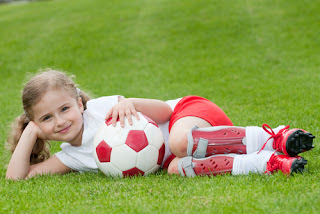Anxious About Moving Your Young Child from Non-competitive to Competitive Youth Sports? Beware
What this blog post is designed to do is to remind you that you are entering deeper waters where there are larger, often unforeseen and sometimes scary forces at work that are real; that have been documented in research; and that you need to be mindful of. What I hope is when the time comes you feel confident about making tough choices that you know in your gut are right because they concern your child's welfare and happiness playing competitive youth sports.
Surprising to many people, the presumably innocent world of youth sport, typically run by our community parks and recreation organizations (Hyman, 2009) are actually very complex constructs where, a) children are treated as “pawns” or in the case of elite child-athletes, “commodities,” b) naïve parents’ and coaches’ vulnerabilities can be exploited, and c) sports scientists are warned of the negative implications of interfering in an, d) otherwise adult-centric world that, at its worst, is filled with conniving (i.e. immoral, illegal or harmful) influencers (e.g. parents, coaches, organizations), multilayer (i.e. local, state, national) political agendas and highly lucrative and commercialized (e.g. Little League Baseball, Pop Warner Football) youth sports economies (Hyman, 2009; Malina, 2010;).
Malina’s (2010) research has synthesized how serious the problems are within youth sports. Children are experiencing social isolation, over-dependence on coaches, loss of control for their futures, and burnout; all mostly because of their, willing or unwilling, over-involvement in youth sports.Competitive demands to win in youth sports are high. So much so, they cause some coaches and parents to turn to cheating the systems in order to win consistently. Examples of lying about children's ages, taking performance enhancing measures (i.e. manipulating diets, and/or promoting the use of steroids) are more common today in youth sports environments than ever before. Why? Because many parents are viewing their children in an economic sense. They truly believe they have the power to influence the future and will do whatever it takes to earn their child the coveted college scholarship or the opportunity to be drafted by a professional sports league. They believe, through their efforts, they can pave the path for their child to achieve those results, but few ever consider the toll it takes on their child.
Unfortunately, many children including the ones directly involved are being physically and/or psychologically hurt in the process. Children directly affected are compromised in their growth and maturation; while the other children, disadvantaged by the cheating and manipulation that is occurring deal with their own issues of diminished self-confidence and self-doubt surrounding their best efforts. Meanwhile parents of the disadvantaged struggle with the disillusionment that parks and recreation systems are designed to combat issues of cheating and manipulation (Malina, 2010, 367-369).
Historically, researchers have attempted to solve youth sports’ complex problems through ineffective efforts. The literature has continued suggesting the need for the transformation of traditional youth sports programs by applying what is known as Positive Youth Development (PYD) frameworks (Le Menestrel & Perkins, 2007). Unfortunately, many PYD programs in parks and recreation designed to foster positive youth development in sport are actually doing just the opposite (Fraser-Thomas et al., 2005). Critics continue to warn there are major problems with youth sports because research is not helping sports leaders and policy-makers make decisions on how to handle the major issues (Hedstrom & Gould, 2004).
What is needed is a leadership mindset inside parks and recreation's PYD frameworks (West & Shores, 2008). At the foundation of this leadership framework, Malina (2010) urges organizations to keep youth in perspective and although often dehumanized and called participants, organizations need to respect that children and adolescents are just that and have needs of children and adolescents.


Comments
Post a Comment